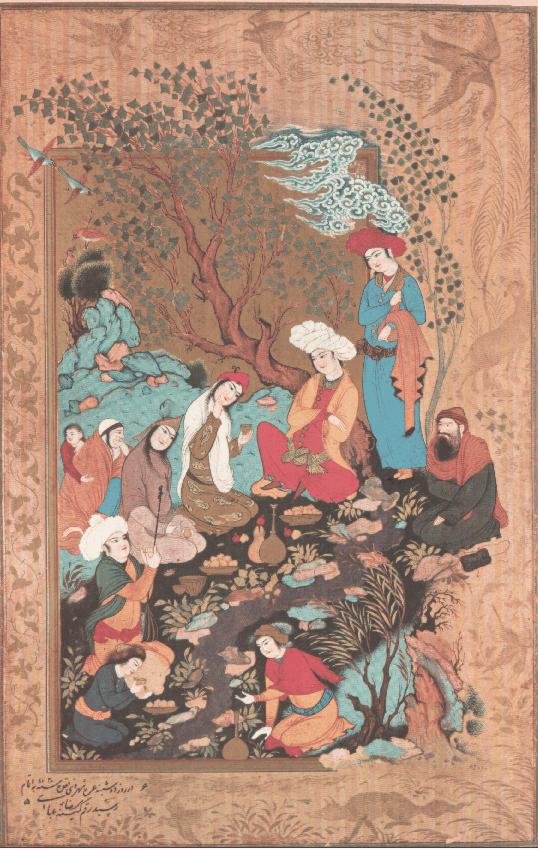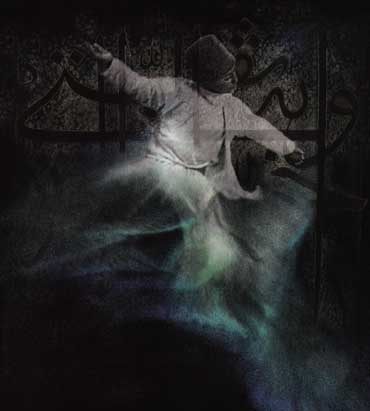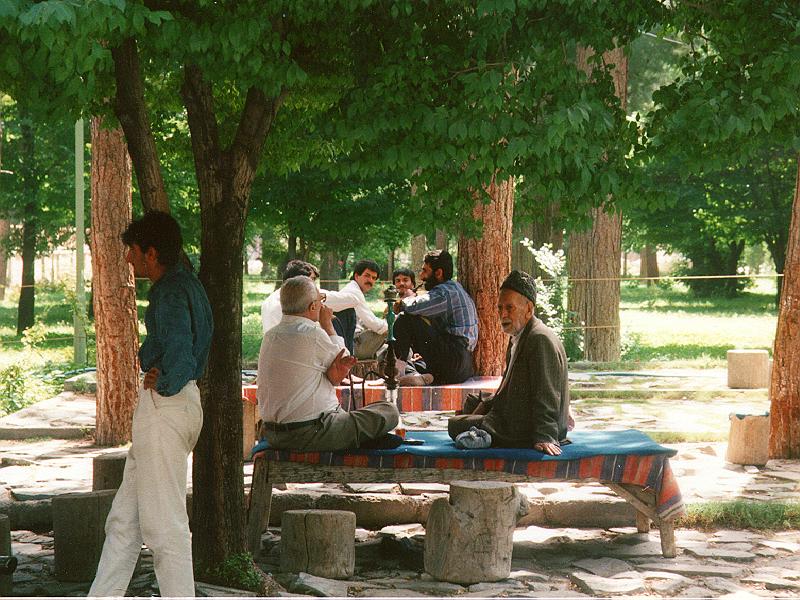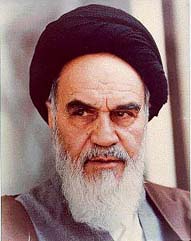 |
Monday, January 20st: Tuesday, Jan. 21st Thursday, January 23rd |
Schedule of Classes & Reading Assignments
(All readings on given days are to be completed before you come to class.)
 |
Monday, January 20st: Tuesday, Jan. 21st Thursday, January 23rd |
Map Assignment due January 31th: turn in to Hascall Hall (5% of your grade)
* Web-sites:
http://oznet.net/iran/frames3.htm
http://www.salamiran.org/IranInfo/General/Geography/
identify: Iran, its neighboring countries, Caspian sea, Persian Gulf
Alburz mountains, Zagros mountains, mount Damavand,
cities: Tehran, Isfahan, Shiraz, Mashhad, Qumm
Tombs of Sa'di, Hafez, Imam Reza
locations of deserts in Iran.
The Qur'an Tuesday, Feb. 4th: Thursday, Feb. 6th: *to see the Arabic text of the
Qur'an posted by the Iranian government, see: |
|
Minature of the Prophet's Mi'raj, Nizami's Khamsa. |
The
Emergence of a Persianate, Tuesday, Feb. 11th: Thursday, February 13th: Tuesday, Feb. 18th: Thursday, Feb. 20th: |
 |
|
 |
 |
Pinnacle of Persian poetry: The Legacy of
Rumi
|
Your friendly little
Writing friend, Dear friends... Be at ease about this writing opportunity. There are, in most cases, some points that I want you to address. However, there are no "right" answers that I have already in mind. I am interested above all in two things: the depth of your thinking about this issues, and your ability to demonstrate the synthesis of what you have read so far and how you have analyzed it. The total for the whole assignment should be around 10 pages. I have tried to suggest page lengths for each question at the end of each. I think once you start writing you will find that things will flow, and most of you will probably want to go over 5 pages. Try to be succinct in writing. Use footnotes. Be sure to demonstrate that you have done the readings by referring adequately to the assigned readings. This is very important. I want you to demonstrate to me that you have actually read and engaged the readings. The whole thing is due Thursday, March 13th, at 4 p.m. in the Religion department. First Question: I want you to take some time and go back over all the books that we have read, and discuss two key concepts. First, I want you to trace the power of words, language, sound, and also the absence of them (silence, etc.). Where do words get their power from? How do they convey meaning? How do they get in the way of meaning? Second, I also want you to discuss (after the above) the Persian obsession with ambiguity. In what way do texts read by Iranians (Qur’an, Rumi, Rose Garden, etc.) attempt to lend a sense of multi-valency (having more than one meaning) to texts? In what way does the openness of texts enable different readings? Going back to the Mantle of the Prophet book, what is the historical importance of the ambiguity and fluidity of texts? (This should take 5-6 pages) Second Question: For the second essay, I want you to do something more fun: It is easy to read Rumi's poetry as beautiful, timeless love poems. I want you to locate and contextualize it specifically in its home of Persian mystical thought (Sufism). To do so, take a poem or two from the Essential Rumi book, and analyze it using insights from the Tales from the Lands of the Sufis book, Approaching the Qur’an, Mantle of the Prophet, or Rose Garden.. Your analysis should be at the level of ideas, and not merely that Rumi makes mention of the Qur'an, God, or Muhammad. I also don’t want you to pick a poem that we have already analyzed in class. Discuss symbols, themes, and Sufi teachings that one would need to have to understand the deeper meanings of the poem you have chosen. (this one should also be about five pages). |
 |
Tradition and modernity clashing... Thursday, March 6th: Tuesday, March 11th: March 14th to March 23rd:
Spring Break |
From Monarchy to the
Islamic Republic:
The Islamic Revolution of 1979 in Iran, Taliban in Afghanistan
 |
 |
| Tuesday, March 25th: *Finish discussing My Uncle Napoleon *Reading from The Shah to be passed out: "Westernization: Our Welcome Ideal" *Click here for some classic pop images from 1970's Iran. Optional Lecture on March 26th, at 2:45 at the Saperstein Jewish Center on Progressive Islam, by Farid Esack. (you should come at least to either this or the 4 pm lecture on Thursday) Thursday, March 27th: *Optional lecture: 4 pm lecture by Farid Esack in Robert Ho lecture room on race, gender, and class in Islam. Tuesday, April 1st: Thursday, April 3rd: Tuesday, April 8th: |
|
A
"small-scale narrative" of Iranian life: Thursday, April 10th: Tuesday, April 15th: |
Contemporary
Iran, beyond the "clash of
Civlization" : Thursday, April
17th: Tuesday, April 22nd: Thursday, April 24th: Tuesday,
April 29th: Thursday,
May 1st: |
|
President Khatami enjoys great support, especially among women, university students, and the young generation. The picture to the right is one frequently seen in Iran these days: a young college woman holding on to a picture of Khatami. |
|
(Take home final exam) Here it is, your cool, funky, last friendly little
writing assignment: Try your best to have a clear thesis sentence at the beginning of the essay. In the beginning stages of this class, we spent a bit of time on Western (largely US) images and perceptions of Iran. Towards the end of the class, we have had the chance to come full-circle, and look at Iranian impressions of and engagement with the West (both US and Britain). Take me through some of the various texts and videos you have seen, My Uncle Napoleon, Occidentosis, The Shah, Khomeini, Mossadegh, Soroush, Mottahedeh (on Huntington), and Khatami. Tell me not just what they each say about the West, but how what they say about the West fits into a larger picture of what they want to see for Iran. In other words, make sure you are doing more than just cataloguing descriptions of the "West", but also analyzing them. Be sure to document what the consistent point are, and where each text departs in a new direction. In the end, where do you think this leaves Iran 25 years after the revolution? that is it. make sure you breathe, and sleep during the next week. You are all precious people. If you have been keeping up with the bulk of the readings, I think you'll have an easy time with this, hopefully! :-)
|
Return to the Core Culture Iran page
Return to Omid Safi's Main Page